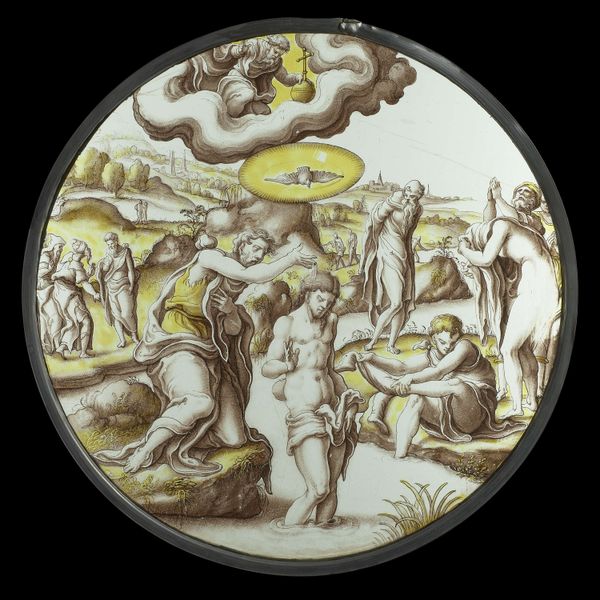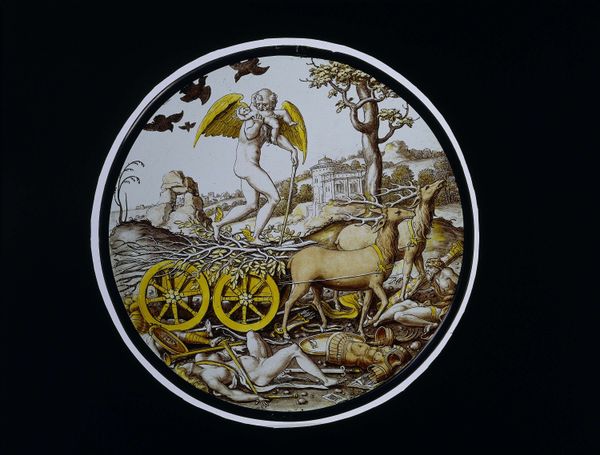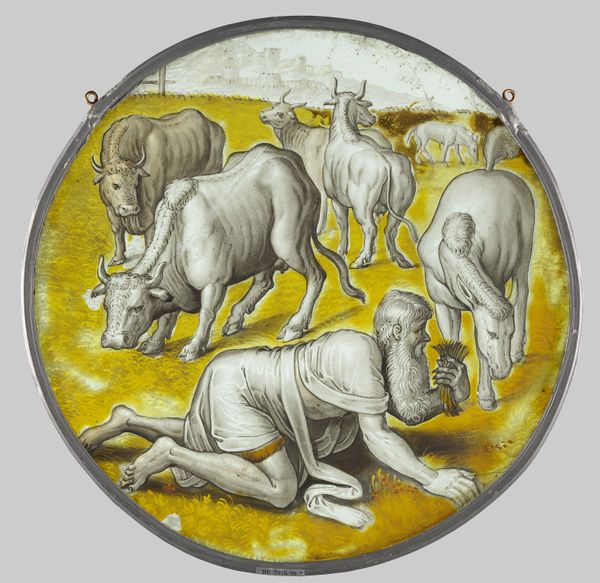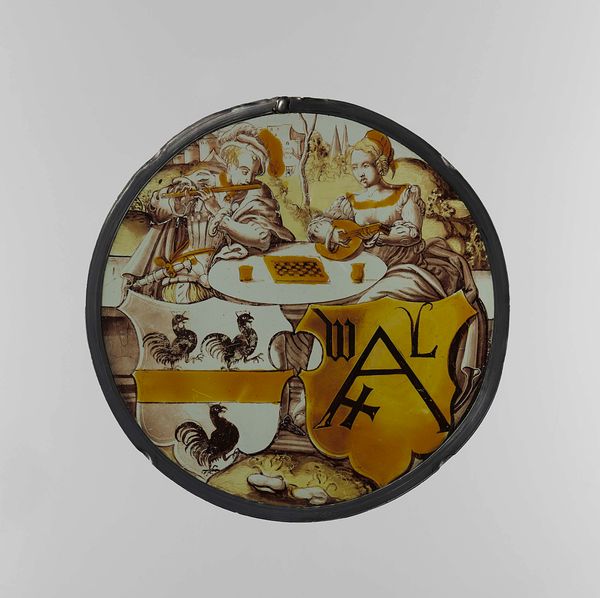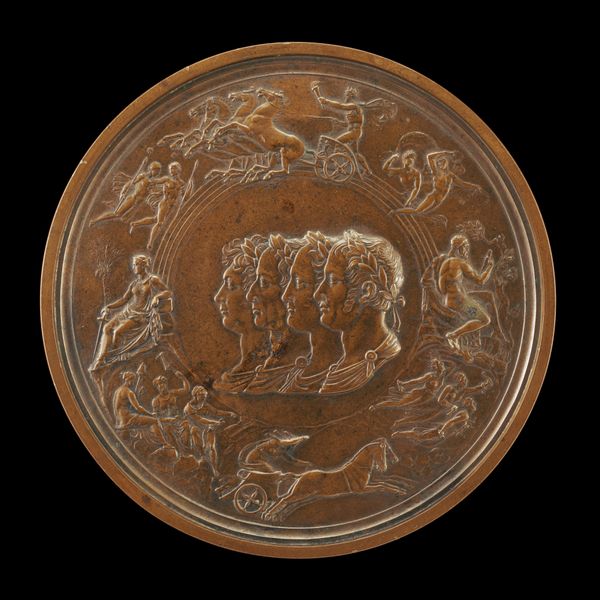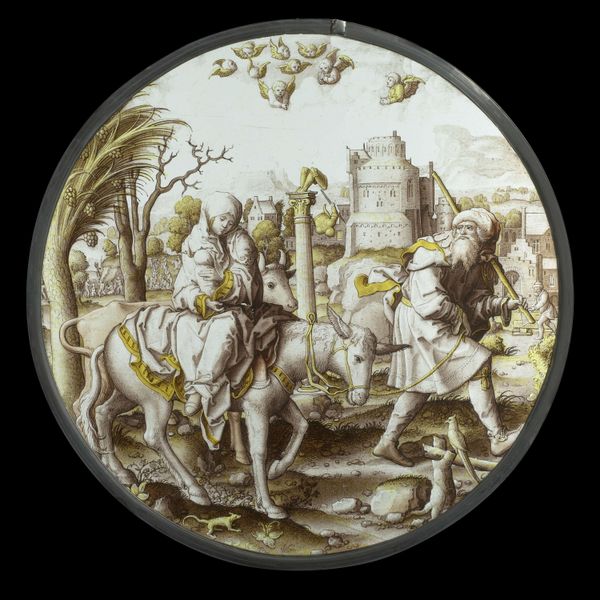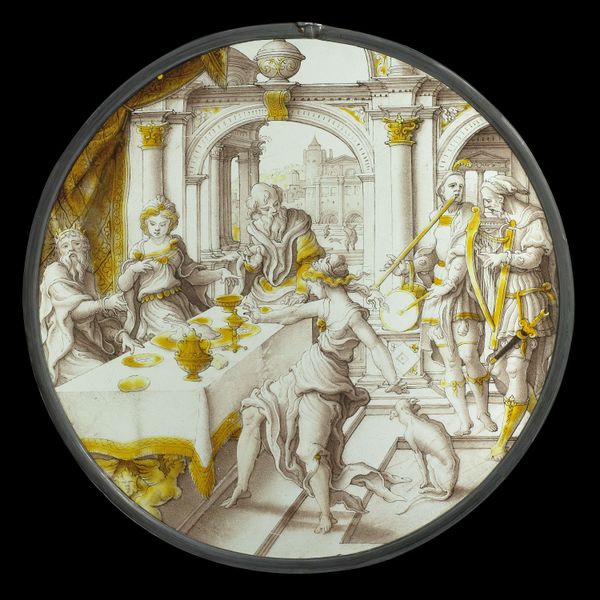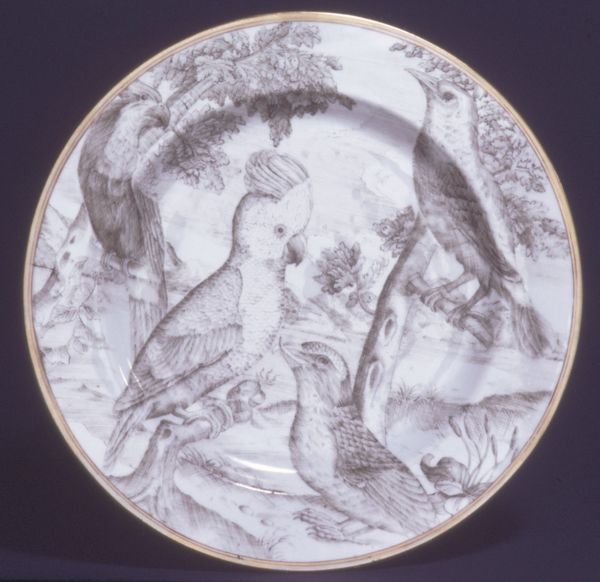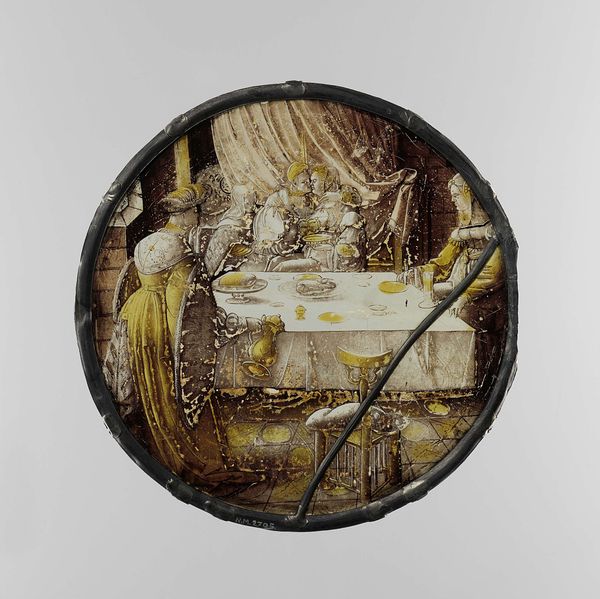
tempera, painting
#
allegory
#
tempera
#
painting
#
sculpture
#
mannerism
#
figuration
#
detailed composition
#
geometric
#
group-portraits
#
history-painting
Copyright: Rijks Museum: Open Domain
Editor: So, here we have *The Triumph of Eternity*, a tempera painting from around 1530-1540. It's anonymous, located in the Rijksmuseum. It has this incredible swirling composition, full of figures, almost claustrophobic. What’s your take on a piece like this? Curator: It strikes me as deeply entrenched in the political climate of the 16th century, specifically regarding the Catholic Church's stance on power and eternity. The painting is likely meant for the cultural elite and is promoting their position of the dominance. Considering Mannerism, think about the highly stylized figures – elongated limbs, dramatic poses. What's the function of that style here, do you think? Editor: Well, maybe it's glorifying the subjects? Giving them a sort of elevated, otherworldly feel that speaks to the 'eternity' of the title. But the scene is quite busy; does that fit with the theme? Curator: Exactly. Now, consider the concept of *memento mori*, a reminder of mortality. We have an image showing damnation in parallel with salvation. The painting places earthly power as secondary. Do you think an audience member in the 1530s, for instance, would consider this an expression of support or defiance to temporal power? Editor: Possibly both, depending on who commissioned it! There’s almost a subversive element because you can focus on hell if you wanted to. It acknowledges both sides. It definitely creates an important, complex viewing experience. Curator: And how that reflects the society from which this work comes from, it certainly adds another level of understanding, as well. Seeing art as inherently tied to societal, political currents adds a new depth. Editor: I agree! Looking at this work through that lens, its message is much richer and really forces one to consider what statements artists made with their paintings, sculptures and architecture.
Comments
No comments
Be the first to comment and join the conversation on the ultimate creative platform.
